How to connect a light bulb through a switch: schemes and connection rules
Have you decided to lay electrical wiring in a new cottage yourself or upgrade the existing network in your apartment? Agree, in this area there are nuances that should be thoroughly dealt with for the sake of their own security. In addition, a self-made electrician is obliged to ensure the perfect operation of devices.
We are ready to tell you in the finest details how to connect a light bulb through a switch. In the implementation of such a solution, a number of proven methods are used, which you will become familiar with while reading the article.
Here you will find a lot of useful information. Possession of information will give both confidence and strength. A thorough understanding of the issue will help graphic materials and videos.
The content of the article:
- Electrical Safety Measures
- Work Tool
- Recommended cables and wires
- Junction box application
- Stripping insulation
- The nuances of twisting
- Correct installation of the switch
- Varieties of household switches
- Types of lamps for home use
- Ways to power a light bulb through a switch
- Conclusions and useful video on the topic
Electrical Safety Measures
Previously, before the start of the installation of switches, lighting fixtures, their connection to each other and the network, it is necessary to disconnect 220V power from that part of the home wiring where the electrical work is supposed to be carried out.
This is done at the input electrical panel Disabling a shared or corresponding group switch.
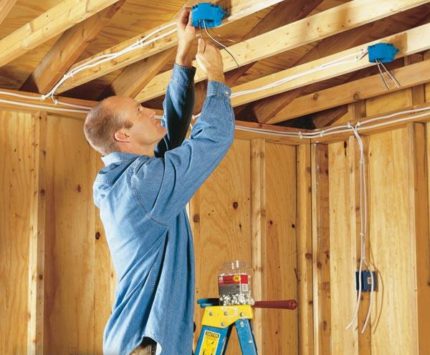
If during the installation process access to the panel is possible for unauthorized persons (for example, located on the stairwell of an apartment building), warning sign "Do not turn on!".
Make sure that the voltage on the exposed contacts of the existing electrical appliances and wiring is absent, it is necessary immediately before work. The easiest way to do this at home is with indicator screwdriver, the health of which shortly before the test is checked from the working network.
It is recommended that before taking contacts and wires with your bare hands, make sure once again that there is no voltage by touching the back of your hand, fingers of your right hand alternately to all of them. Dry, intact skin on the back of the hand has increased resistance to electric current.
The essence of connecting the lamp through the switch can be visualized on a demo stand:
Work Tool
In the process of electrical work being performed, the home foreman will need a set of the following installation tool:
- Sharp knife.
- Pliers (pliers).
- Side cutting pliers.
- Thin and medium slotted screwdrivers, possibly a medium cross.
Insulation may be required for insulation inside the junction box or lamp housing of the wire connections. In these cases, it is recommended to use the HB tape. Over time, it does not melt and does not stick to the constantly heating contacts isolated by it, but only dries up. If necessary, crumbles well with pliers.
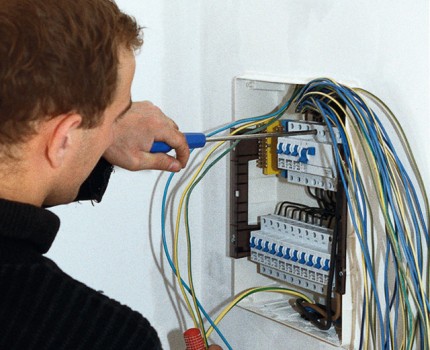
Great if there is a special wire stripper - stripper or nippers with cuts to remove insulation. In the absence of such devices and a large amount of work, you can get by with a folk remedy, having finalized the side cutters.
To do this, the opposite cuts are made with the file in the cutting edges closer to the hinge, which together should form an opening the size of which is slightly larger than the diameter of the exposed wire core.
Recommended cables and wires
For a new installation of home lighting electrical networks, it is recommended to use VVGNG cables with single-wire copper, 1.5 square mm cross-section, in non-combustible insulation of unequal color cores:
- blue - zero working,
- yellow with a green stripe along - zero protective (grounding),
- any other color - phase.
During installation, it is desirable to observe a combination of uniformity of colors with their functional purpose. This requirement will protect and simplify further maintenance of the electrical wiring.
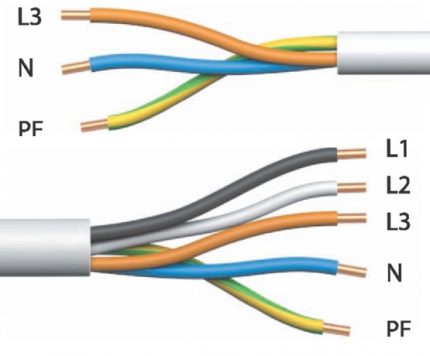
In houses where the wiring is still aluminum, the replacement of certain sections of the lighting lines, which are patched up with plaster, must be carried out with the APPV-1.5 wire, which has aluminum conductors or a similar cable with open laying. The same material is used due to the oxidation of the junctions of twisting aluminum and copper inside the junction boxes.
If it is possible to replace the twist with terminal connections, copper wiring is allowed.It is strongly NOT recommended to use any cables, wires with multi-wire (soft) cores.
Junction box application
Cables, wires do not go directly from the shield to electrical appliances, from switches to light bulbs. All outgoing, incoming electrical equipment lines are found in specific assemblies called junction boxes. There they communicate in a certain way.
With the rules junction box installation, also called soldering, branch, soldering on slang of electricians, will be introduced by the following article. We recommend that you familiarize yourself with useful material.
Most often, boxes have empty space inside. The wires of different lines are then interconnected using twists. To ensure reliability, it is recommended that the tails of the joints be treated with special welding. Copper cores can simply be soldered.
Before laying inward, open contacts are insulated from each other with CB tape. It is possible to screw special insulating clamps onto twisted wires. Here the tape insulator is no longer needed.
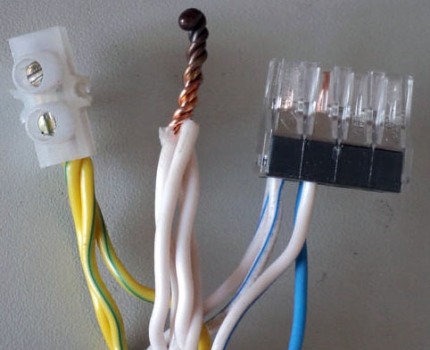
If the box is equipped with screw terminals, then the contacts are made with the participation of them. Such devices allow you to connect aluminum conductors and copper. The clamping terminals can be used, but this is if there is enough space for laying the ends of the wires connected by them.
Stripping insulation
To remove part of the external insulation of the VVGNG cable, a knife is required. It should be so sharp that even an inexperienced home master could make sure cuts.
The first cut is made from the end along the sheath by 3-4 cm. After that, with one hand they take on the bundle of loose extremities of the wires, and the second one pulls on the incised shirt. Then she tears herself.
The depth of the tear is such that the released ponytails of the wires are of the maximum length that the junction box, socket box or housing of the lighting device allows to lay. The stock will serve faithfully in the future when burning weakened contacts.
A torn cable jacket is turned inside out and carefully, so as not to damage the insulation of the wires, it is cut round.
The veins are most easily stripped, of course, stripping tool - a stripper or at least side-cutting pliers with slots. In the absence of these, the knife is used the same way as before. The use of simple side cutters is allowed. In extreme cases, biting edges of pliers are used.
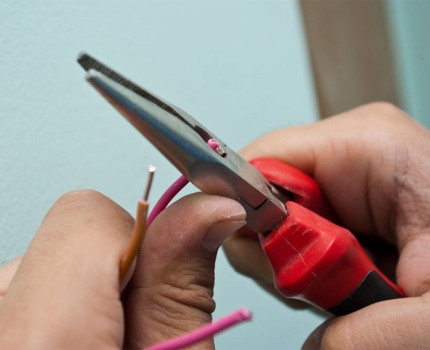
With light movements of the tool in a circle, they cut shallow into the insulation and tighten it. The main thing is not to cut through the metal of the conductor, otherwise where there is damage, it will necessarily break off. Well, if immediately, and not after installation.
The size of the exposed area is determined by the connection method. When it is the screw terminals of the terminals of the box, switch, chandelier or sconce, 0.5-1 cm may be enough. For twisting with the wiring of the lamp it will take 2-3 cm.
If the twists are located in a junction box, the rule applies, the more, the better, especially without soldering or welding. Usually 3-5 cm.
When using screw-on insulating clamps, clamping clamps are individually tailored to the stripping length.
The nuances of twisting
When twisting two wires, their exposed ends are folded with the letter “X” so that the intersection is at the beginning of the insulation. Then the ends of the cores are clamped with fingers and twisted as much as possible. Next, the process is helped with pliers.
Three wires and more are connected in the same way.If the connection comes out long and flexible at the same time, it is folded in half, pressing on with pliers. Shortened twisting requires less electrical tape.
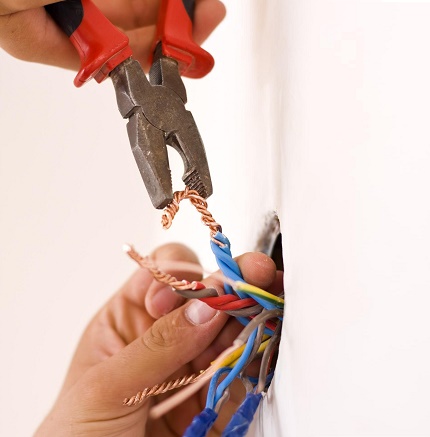
The electrical tape begins to overlap with the factory insulation of the twist wires to the width of the tape. After passing in a single layer until the end of the exposed tails, a couple more revolutions are made, as if to catch air. This "emptiness" is bent back to twist - a protected end is obtained, and the second row dominates with the mandatory entry to the main insulation of the cores.
Correct installation of the switch
According to the execution of the circuit breakers are indoor and outdoor installation. Modern outdoor switches are suitable for mounting on any surface without additional insulating stands. Internal switches are hidden in round sockets in the wall, equipped with special cups called podrozetniki.
About how to install this mounting box in a concrete wall or in a structure made of drywall, in detail written here. We advise you to read the proposed article before starting work.
Podrozetniki - a standard wiring assembly. They are also used to equip outlets, so they are called so. “Sub-switches” would not sound very much.
The location of the switch is considered to be correct, in which switching on occurs by pressing the top of the key, switching off - the bottom. This makes it possible even for a short person to respond in an emergency and promptly de-energize the appliance by hitting the key with the fingers from top to bottom.

With proper connection, a phase wire comes to the switch from the junction box. To interrupt the phase wire circuit so that the lamp is switched off without voltage is the main task of the switch.
The following photo compilation illustrates the connection process:
If the design of the device allows, inside the circuit breaker itself, the phase wire is connected to the upper terminals, and all outgoing conductors are connected to the lower contacts. This rule applies to the arrangement of any electrical installation.
Due to the design features, an exception to the general rules is through and cross switches, which are discussed below.
Varieties of household switches
The switches used in the modern home interior are diverse. Introduces the classification of light control devices in detail one of the popular articlesposted on our website.
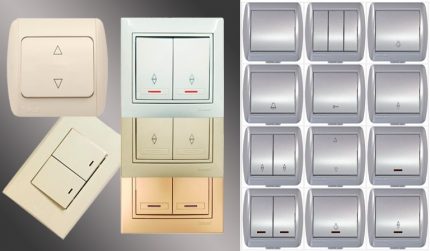
By the difference in their functionality, the following most common varieties are distinguished:
- Single-key switch - his mission is simple: on / off.
- Two-gang switch allows you to control simultaneously two independent lighting circuits.
- Three-way switch, accordingly, coordinates work in three directions.
- Switch-regulator (dimmer) not only turns on / off, but also by pressing a key or by turning the round knob that replaces it, smoothly adjusts the brightness of the lamps.
- Switch with regulator - a two-, three-key switch, which stepwise, by switching keys, controls the incandescent light of all bulbs at the same time.
- Single pass switch. The only key throws the phase between the two wires. If voltage is applied to one, it is disconnected from the other, and vice versa.
- Cross single switch. By changing the position of the key, the direct connection of two lines to the cross synchronously changes.
- Sensor switch. It has no levers - it starts and stops the supply of electricity with the touch of a finger to its surface.
A switch with a motion sensor lights the lamp automatically, reacting to a person passing by.
Types of lamps for home use
Tube progress does not lag behind the switches. Their variety is also impressive.
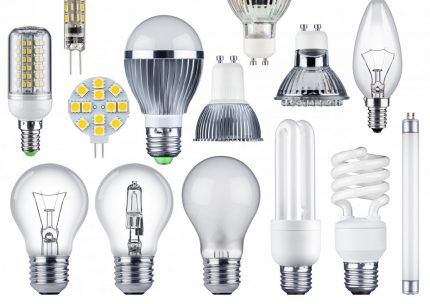
But here, some more common types are defined:
- Incandescent lamps - rooted domestic light sources in a rounded glass bulb with a vacuum and a tungsten spiral inside.
- Halogen lamps - the same incandescent lamps filled with special gas. It increases the service life, minimizes the size of their flasks. Disadvantage - during installation, do not touch the glass of the bulb with your hands.
- Fluorescent tubes - common at home, not very, but also traditional lighting devices (hereinafter simply “fluorescent lamps”).
- Energy-saving LED lamps, based on the name, use the glow of groups of LEDs. They can be fixed in ordinary screw-in cartridges (hereinafter simply “LED lamps").
Energy-saving fluorescent bulbs are increasingly replacing conventional ones. The principle of operation is similar to the action of fluorescent lamps. Screw in like incandescent lamps (hereinafter simply “energy-saving lamps”).
Ways to power a light bulb through a switch
Perhaps some of the considered scheme for interconnecting a household switch to a wall or ceiling light will omit the details of the supply of a zero protective (grounding) wire. It seems that connecting it will not cause difficulties.
In a standard electric cable, this is a core with yellow insulation and a green stripe along it. The place of its connection to the appliance is indicated by ![]() .
.
# 1: The simplest connection of the lamp
The most elementary is the on / off connection of the lighting device to a single-key switch with two wires. Most of all it is suitable for a single single-lamp luminaire.
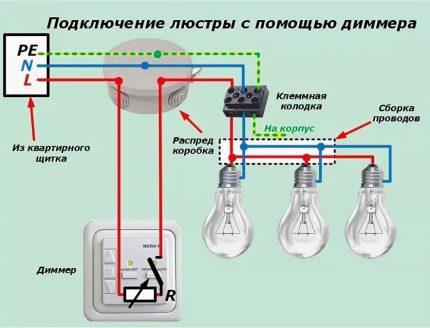
When the old wiring has only two wires leaving the ceiling or wall that feed the light electrical appliance, and the alteration is complicated, you can connect a lamp with a larger number of lamps. But with this connection, all the lights of the lighting device will turn on at the same time.
A classic single-key switch without upgrading the wiring can be easily replaced with a light dimmer switch-dimmer, made in a single unit. It is possible to purchase a device with a regulator like a key, or it is possible in the form of a round knob.
The characteristics of the dimmer must correspond to the power of the connected luminaire. The only thing is that it cannot be used together with lighting devices equipped with energy-saving, LED or fluorescent lamps.
For standard installation in conventional socket boxes, the industry has mastered the production of touch switches with only on / off functions. They are also connected by two wires and can replace simple single-key ones.
# 2: Separate inclusion of chandelier lamps
Usually, three- and five-arm chandeliers are arranged so that the lamps can be connected separately or together in groups (1 + 2/2 + 1; 2 + 3/3 + 2). This allows you to adjust the illumination of space by the number of simultaneously working light bulbs.
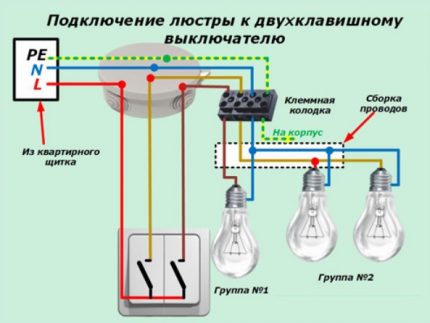
In this case, you need a two-key switch and electrical wiring with at least three wires. By turning on one of the two or both keys at once, the brightness of the lighting fixture will be adjusted.
Still two key switch it is used to control from one point the lighting of two, most often adjacent, rooms independently, for example, a toilet and a bathroom, an entrance hall and a pantry.
If instead of the usual two-key switch you use a two- or even three-key for a chandelier with separate regulators built into the keys, then all of its lamps will light up simultaneously, and you can control their incidence in steps, by switching the keys.
# 3: five-arm chandelier control
Where separate and simultaneous control of three independent lighting devices is required, a three-key switch is installed.

To surprise guests, you can connect a five-arm chandelier through a three-key switch. True, a small alteration at the terminals of the lamp itself will be required. From a group of three line wiring, one must be disconnected and used independently.
Then, by various combinations of pressing the keys of the three-key switch, it will be possible to turn on simultaneously from one to five lamps (1 + 2 + 2/2 + 2 + 1/2 + 1 + 2).
# 4: Lamp - one, switch - two
What to do when the corridor is long and dark? This situation will help to resolve the installation of the lamp with two single pass switches at different ends of the transition. The disadvantage of this method is the indefinite position of the on / off keys.
Another such lighting control technique is applicable when driving up the stairs, in an attached garage (entrance from the house, exit through the gate and vice versa). An additional switch near the sleeping area will not become an excess if the room is quite long.
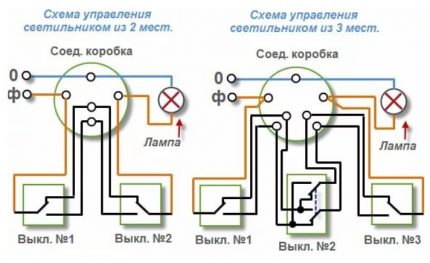
Is it possible to independently illuminate the flights of stairs, climbing or descending the stairs? In addition, you will need another single pass switch on the floor. By pressing just one key, it will simultaneously turn on the next lamp and turn off the previous one.
# 5: Turning on the light bulb from different places
To control the luminaire from more than two centers, in addition to the walk-through, cross-type single switches are required. Each new point - one at a time.
A lot of switches are convenient if living rooms go into the extensive home lounge. Inhabitants of any room will be able to turn on the lights at their doors independently and turn off in all other places equipped with auxiliary switches.
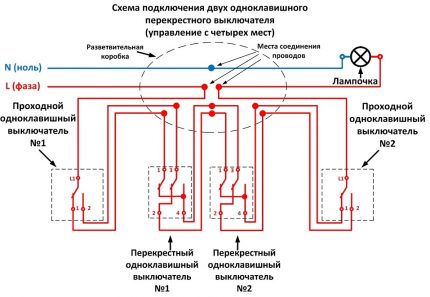
This method is also advisable in rooms with a hotel type layout - many doors opening into a long corridor.
# 6: Connecting a chandelier with a fan
Pulling a hanging bag on a chandelier equipped with a fan to turn it on is inconvenient. It is also problematic when the ceiling is high.
It is easier to use the studied methods for separately connecting the chandelier lamps. The fan is connected via one of the keys of the two- or three-key switch.
In the first version, the lamp can only burn completely. In the second - the bulbs will be lit in two groups.
# 7: Built-in motion sensors
By itself Motion Sensor is already a switch device. But we are interested in it, precisely when it has a standard case and can be mounted in a socket box.
It turns out that it is connected to the gap of the phase conductor going to the lamp as a normal switch. But the problem is that for the internal electronic circuit of such a device, a full 220V power supply is required, which means another wire, blue, zero.
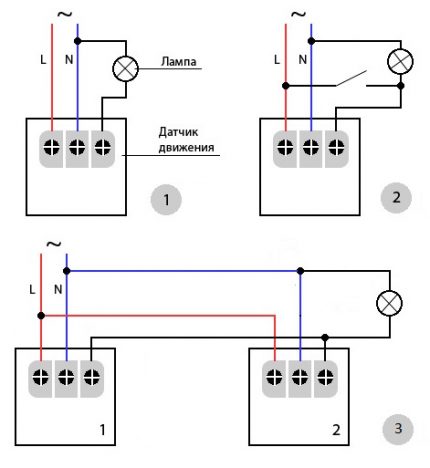
If you want to install a switch with a built-in motion sensor instead of a single-key, you can not do without replacing the two-wire wire that stretches towards it from the junction box with a three-wire one.
Conclusions and useful video on the topic
The videos will introduce practical working methods.
VIDEO №1 will show an example of a simple connection of a switch and a bulb:
VIDEO №2 will help to master the skills of connecting and insulation of wires:
VIDEO №3 tells how to connect chandeliers and not only:
Manufacturers in one place are not marking time. All newer, more ingenious lighting fixtures they come up with. But no matter how cosmic the lamp may seem, there is always a simple way to connect it. The main schemes, the rules for connecting bulbs to switches, the conditions for safe electrical installation will remain typical for a long time.
Do you want to share the experience of an independent electrician, interesting and useful nuances of connection, have you found any flaws in the material presented? We are waiting for your comments. Please write in the block below, post a photo on the topic, ask questions.

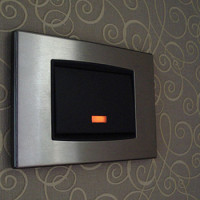 How to connect an LED switch: rules for connecting a backlit switch
How to connect an LED switch: rules for connecting a backlit switch 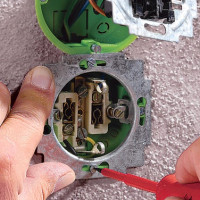 How to connect a switch with one key: rules and connection diagrams
How to connect a switch with one key: rules and connection diagrams 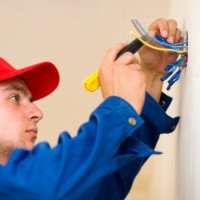 How to connect a double switch to two bulbs: schemes + connection tips
How to connect a double switch to two bulbs: schemes + connection tips 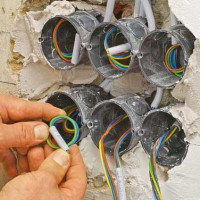 How to connect an outlet block: installation rules and connection diagrams
How to connect an outlet block: installation rules and connection diagrams 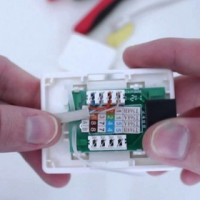 How to connect a telephone socket: connection diagram and installation rules
How to connect a telephone socket: connection diagram and installation rules 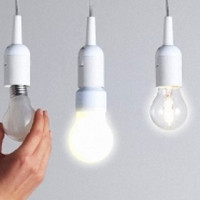 How to choose and correctly connect a three-key switch
How to choose and correctly connect a three-key switch  How much does it cost to connect gas to a private house: the price of organizing gas supply
How much does it cost to connect gas to a private house: the price of organizing gas supply  The best washing machines with dryer: model rating and customer tips
The best washing machines with dryer: model rating and customer tips  What is the color temperature of light and the nuances of choosing the temperature of the lamps to suit your needs
What is the color temperature of light and the nuances of choosing the temperature of the lamps to suit your needs  Replacement of a geyser in an apartment: replacement paperwork + basic norms and requirements
Replacement of a geyser in an apartment: replacement paperwork + basic norms and requirements
Removing from a tape from a wire and subsequent twisting with insulation, it would seem, is not a difficult matter.Out of inexperience, he began to isolate the twist from the end of the twisted wires. It didn’t work, I was nervous. Thank you for the good advice, good luck to you.
Give advice to a young and inexperienced) I do not rummage about an electrician at all .. The situation is this: one bulb has two switches. When I turn on the light with one switch and turn it off with the other, then the next time I have to turn it on exactly with the switch that was turned off before. How does this happen at all. My switches are not very far from each other, but if it were far ... would you have to run? Thank.
Good day, Sergey. I suppose that your bulb is “controlled” by phase disruption by ordinary single-key switches. The phases are summed up to it from different junction boxes (I attached the circuit to the answer).
You need to purchase two “pass-through switches” - hammer the name into Yandex search. They are also single-key. The scheme in which they should work is also attached to the attached photo.
Of course, the best option is to buy a lamp with a motion sensor (it is better to respond to movements in the coverage area). These devices are described in article about lamps with a motion sensor on our website.
With walk-through switches, everything is quite complicated. Himself, when he mounted himself he was tormented. I had to read a lot of literature and draw a diagram. Because it was two-button on two groups of lamps. In the end, I still managed to do it. Not the first time true. Here, a separate article must be written on this topic.
Sergey, do you have a connection diagram?
It is strongly NOT recommended to use any cables, wires with multi-wire (soft) cores.
I wonder why?
Good afternoon, Pavel.
Similar wordings make you flip through the Rules. After scrolling through the PUE, you will find a “interesting” point that limits the scope of application of cables and wires (attached screenshot).
It turns out where, under what conditions it is possible to use conductive products, manufacturers write in the passports for the products. Manufacturers that produce cables and wires, in turn, are guided by standards developed by "centuries-old" practice.
Stranded cores are highly flexible, which requires appropriate insulation properties. Use such wires, cables for powering portable, mobile power consumers, installations.
When installing a stationary power grid, this quality is unnecessary. In addition, the connection of such wires requires preliminary preparation - even before termination they need to be soldered.
There is an instruction “AND 1.00-12” for installation of wiring of residential buildings - there a whole table is devoted to the scope of application of specific wires and cables.
Bulbs on all 3 floors do not turn off. In the relay shield hager emoo1n2. Turn on the lamps with a button on the wall. Only 12 buttons inside 12 apartments and 6 on 3 sites. Only 18. The relay seems to be normal, a timer is audible. The buttons are not stuck on the outside. I changed the relay to hager emn 001. All the same. By the way, I can not find the description of the relay hager em001n2. Help, who can, only in the case. Thank. Jacob.
Good afternoon, Jacob.
It is not possible to answer how you call “on the case” - your question does not contain the necessary information. After all, the enumeration of the number of buttons devoid of: “power and the number of bulbs; lighting schemes; relay connection diagrams ”, does not give anything.
You need to recalculate all the bulbs, find out how many kilowatts are connected to the executive contacts of the relay and convert the power to amperes. The latter must be compared with the permissible current, which the relay can break / turn on.Typically, all characteristics are given on the nameplate or extruded on the plastic relay.
By the way, replacing the relay, which did not give a result, says that the amperes are probably "extra" for the bulbs. The lack of power of your lighting does not allow you to advise a specific relay model - the only thing I recommend is looking for the right one from Schneider Electric. Buy after reading your passport.
You can also experiment - turn off some of the lights to see the reaction of the relay.